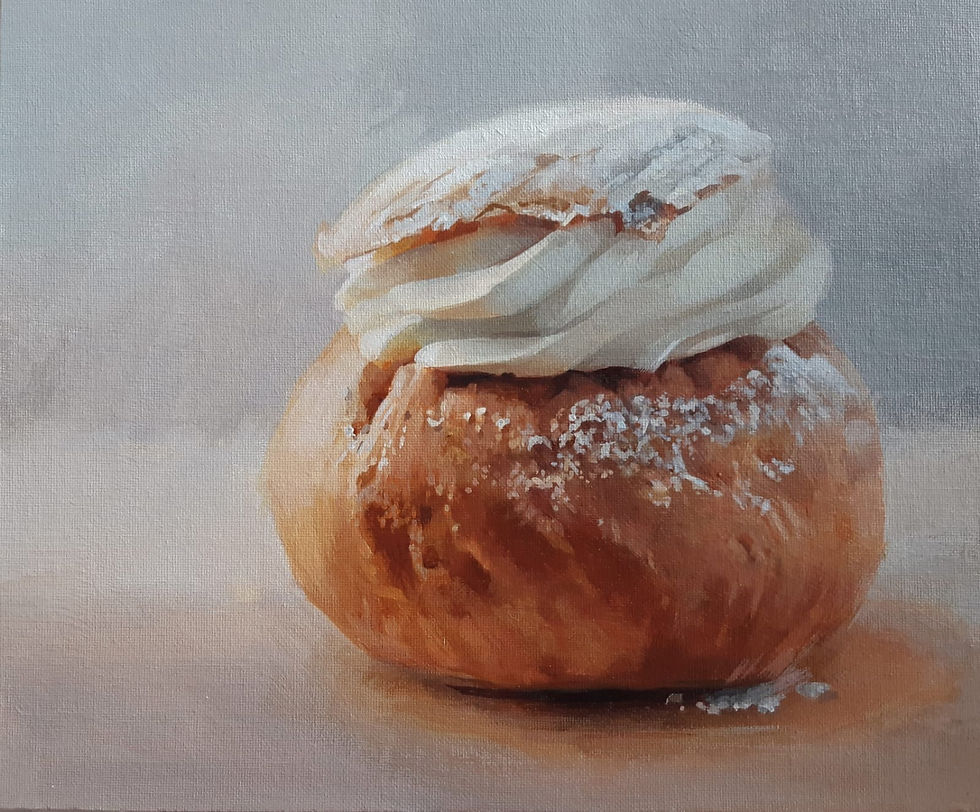Two sides of the picture: Art's role in the quest for Sustainability
- chriswoodcock32
- Dec 9, 2023
- 3 min read

9 December 2023: a brief reflection on the role of Art in sustaining our world, three days from the end of the COP28 Summit in Dubai, as we wait to see if they agree any meaningful actions to alleviate global warming.
Art has such an important and illuminating role to play in supporting ecological themes and sustainability.
Saving our planet and its many species, as we all know, has reached an extreme tipping point - and Art can help to challenge the status quo and highlight the threats and our greed, as well as remind us of the beauty and value of our globe and its inhabitants.
Art can also stimulate new ideas for how society can live more harmoniously and ethically to reduce the negative impact of humans and engender more healthy ecosystems for generations to come.
In art making, the aim to be sustainable has led to the development of pioneering works that use innovative materials and media to convey powerful messages about climate change, political policy and social injustice.
But Art isn't always the hero. When things get out of hand - and the commercial contemporary art stage gets in swing - Art can also be a wasteful polluter, with each artwork having a detrimental carbon footprint. Materials can be toxic and carbon is released as they are manipulated. Art productions can be extremely wasteful and, as 'big name' artists and their entourages fly from one country to another to complete or promote work, they add more carbon into the atmosphere.
But there's more good news too.
The pandemic and the climate crisis have forced us to change behaviour, slowly. And the art world is no exception. One of the largest art-based generators of waste are art fairs. The latest move, by some, is to take fairs online, reducing carbon emissions. It's a step towards artists throwing off their hypocrisy - putting sustainable practices at the forefront in the quest for sustainable creation.
Since 2012, all cultural organisations that receive regular funding from Arts Council England are required to report on their environmental impact, using advanced carbon calculators, designed specifically for the cultural sector. This has made Arts Council England (and Creative Scotland) the first arts funding body to recognise the environmental role that the cultural field can play. Museums, theatres, festivals, tours, galleries and productions have started to reduce their carbon emissions (as well as water use and waste). It's a beginning.
Meanwhile, in our regional art world, sustainable art can be defined in a variety of ways: some artists are primarily concerned with expressing environmental issues, while others use environmentally friendly materials and studio practices in their work. Some do both, injecting creativity and originality into making and expression.
At Spencer House Gallery, we have sought out and welcomed many exponents of sustainable art. There are no fixed rules for what makes a piece of art sustainable, but our regional eco-artists often look for ways to create without damaging the environment. For instance, some artists make things from recycled or upcycled materials or others use only natural materials, like clay and stone, and time-honoured, low-carbon craft skills.
Others combine ecological materials with the topic or theme they depict. Take Marian Jazmik with her upcycled, heat-transformed household plastics that are saved from landfill by combining with textiles to create wonderful depictions of the natural world – corals, fungi, crustaceans, spores. She celebrates the natural world by helping to save it.
Printmaker Nat Morley is a real-life eco warrior who supports a variety of sustainability causes. Her work celebrates animal species and her disarmingly beautiful print, Sixth Mass Extinction (above) lures us in to face up to the horrors of the destruction we have wrought.
Meanwhile, Jim Pilston uses recycled pulp and upcycled paint (the leftovers from paint merchants) to create his surreal folklore sculptures, many of which hark back to a simpler age when material possessions were not the ultimate goal.
And countless of our artists focus on the natural world, its richness and its inhabitants. Venerating their beauty and highlighting the fragility of their survival – Sue Ryland, Lynsey Cleaver, Jennie Loader, Angie Spencer, Caroline Chappell and Grenville Moore, to name but a few.
We're here and we're doing our bit. We're promoting and defending sustainable values and messages.
But will it be enough? ...Not if our political leaders fail to deliver.




Comments